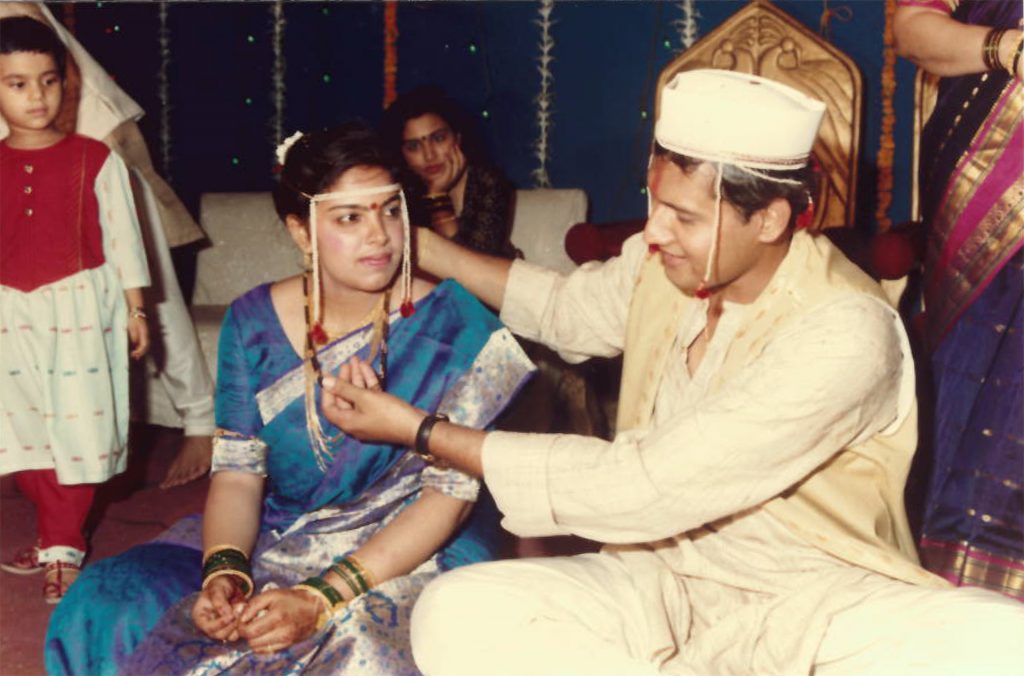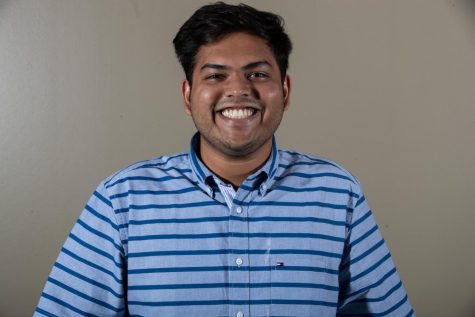Tambe: India’s faith in arranged marriages
Although India is seeing modernization in other spheres, the tradition of arranged marriages prevails.
July 4, 2018
My parents met each other in college while studying architecture together. They dated through college and got married two years after graduation. As a kid, this was the definition of marriage for me — two people falling in love, being with each other for a while, and then deciding to spend the rest of their lives in the company of each other.
As I went from being a toddler to a grade-schooler, I realized this was the way only a small portion of people in India got married.
This was the section of society that lived in big cities. This form of marriage is still not socially accepted in rural towns and villages in India.
According to a study published in The Washington Post in 2017, 84 percent of Indians had an arranged marriage, and 53 percent Indians disapproved of dating before marriage.
Arranged marriages have been around in South Asian culture since 500 B.C. They are a type of marital union in which the bride and the groom are chosen by someone other than themselves — typically by their parents, relatives, or family friends.
I experienced the tradition of arranged marriage firsthand when a few years ago, my dad’s youngest cousin decided to get married. It all started with photographs, personal information, and horoscopes of potential brides flooding into my grandparents’ house.
This was followed by prolonged discussions about my uncle’s future with the prospective brides. I was not allowed to take part in these conversations because I was too young, but the thought of my uncle marrying a girl before really getting to know her threw me into confusion.
A chain of events ensued — elders of both families talked to each other; discussions took place regarding the backgrounds of the bride and groom; elders of both families started meeting; and finally, horoscopes of the bride and the groom were matched.
After both sides of the family felt satisfied with the “background checks,” the prospective bride and groom were given a chance to meet. Initially, they met in the presence of their families, and as this proposal started materializing, the bride and groom started meeting outside.
After a couple of meetings and prolonged discussions in the house, my uncle was asked to convey his decision — a “yes” or “no,” which would be taken as the final word. It was a “yes” — he agreed to get married.
As this was the first wedding in my house that I experienced closely, I was bewildered to see that my uncle was not actively involved in the planning for the big day. All decisions were run by him before being completed, but he was not allowed to actively take part in deciding how he wanted his ceremony to look like. Most of the nitty-gritty was left to the elders of the two families.
All the meetings, discussions, talks, and negotiations made me realize that it was more than just a ceremony at stake. Rather, it was two families coming together to form a third one along my uncle and aunt.
This was when I understood that in India, it is never the marriage of two people but the marriage of two families.
Amid the excitement for the wedding, however, I was stumped by the question, “How can my uncle decide to spend his entire life with an almost stranger?” The thought alone scared me.
I would rather be in a space in which I get to know a person better and then choose to arrive at a decision about marriage.
This is the way a majority of marriages take place in India. It came to me as a surprise that most arranged marriages are successful. India has a divorce rate of less than 1 percent, according to a report from BBC.
In India, when a marriage does not work, families of the couple get involved and work to make the marriage successful. Divorce is deeply stigmatized in Indian society, according to a report in the Journal of Comparative Family Studies. Divorces are rare and are looked at as last resorts.
RELATED: Tambe: Fairness creams and the desire to be different
The United States sees a divorce rate of 42 percent, according to a report from The Guardian. This is largely because divorces are easier and common to file.
Because I was raised by parents who had a love-marriage, the thought of having an arranged marriage for me seems frightening. Although my parents understand this, most people in my family do not.
In Indian society, a marriage is treated as a bond between families, which strengthens the bond between the bride and the groom. I have seen around me couples whose marriages have been arranged by their families. Most of these can be deemed “successful” because they have not ended up in a divorce. I, however, have seen a lack of chemistry in many of these couples and often wonder whether these marriages are successful in a deeper sense.
With the changing times, the thought process of the educated class in India is changing. In this changing society, I embrace the idea of falling in love and then getting married, rather than the other way around.















